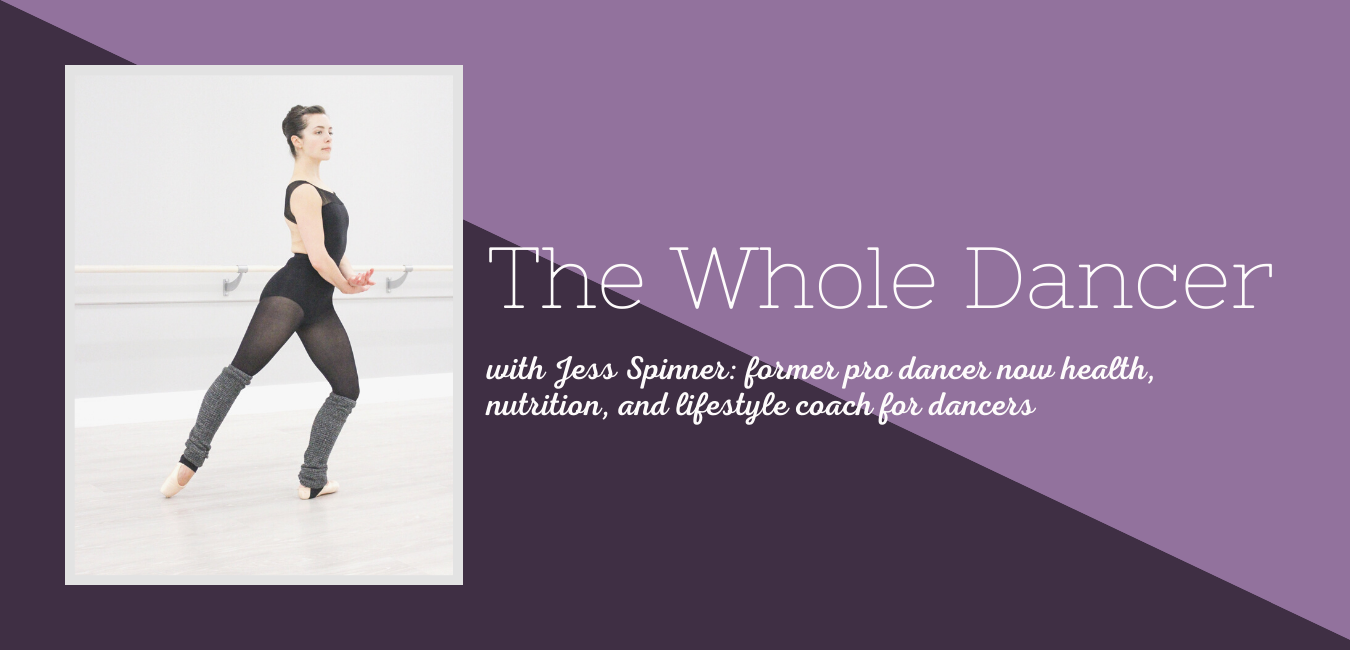Mindful eating is a practice and a way to tune into your food and fully experience what you’re eating. For dancers, intentionally connecting to your food is key to feeling more balanced in the way you’re relating to your food and food choices.
If you’ve ever realized you were totally caught up in your phone or a show and completely disconnected from your meal, don’t feel bad. It’s incredibly common, especially when people are busy. When you’re busy, like dancers are most of the time, and then you’re eating a meal alone, it’s very normal to look for connection at meal times outside of the food you’re consuming.

What is mindful eating?
“Mindfulness traces its origins back to various religious and secular traditions. These include Hinduism, Christianity, Muslim, Buddhism before the modern secular practices.” To be mindful, simply, is to be present in the moment.
When you relate mindfulness to food, it still just means to be present with and aware of what you’re eating. There are a number of things you can put more attention on at meal time to find a greater connection to what you’re eating.
Key principles of mindful eating.
Here are some key principles of mindful eating that you can incorporate in your approach to food. As with all things related to food for dancers, if you start to obsess over eating mindfully “perfectly,” it’s not going to be helpful. Consider each of these key principles and choose one area of opportunity.
Incorporate pleasure.
Something I talk about with dancers all the time is how important it is that you enjoy your food. Yes, prioritize nutrient-dense eating, but those healthy choices should also be delicious and craveable. Food should be pleasurable. It should be indulgent and decadent at times, but there should be pleasure whether you’re eating a veggie and rice bowl or a piece of chocolate cake.
Creating healthy, delicious meals does require you to develop some skills. You need to incorporate healthy fat, spices, and diverse flavors to make your healthy meals enjoyable. Commit to developing that skill.
Pay attention.
When you eat a meal, pay attention to what your body and mind are telling you. There are so many valuable insights to be had when you truly tune into your body’s cues. What’s going on around you as you enjoy your meal? Are you in a pleasurable environment or a bustling, stressful environment? You can’t always control where you eat, but staying aware can allow you to intentionally bring focus back to yourself.
Notice how you’re feeling in your body as well. How is the food sitting with you? Are you experiencing any strong emotions that are impacting how you feel in your body as you eat your food? Pay attention to these physical or emotional sensations and take note of how it shows up in your food experience.
Be present.
Meal time can become so routine that you miss it. At times, dancers have to eat on the go or quickly in between classes or rehearsals. This is an additional reason to be as present as possible when you’re able to slow down and take your time with food.
It can help to take a few deep breaths before you start eating. Express some gratitude, whether it’s out loud or in your head. Be present as you eat. If you’re eating alone, you can watch a show on TV but avoid the distraction of your phone.
Take your time.
Speed eating is all too normalized in our culture. Most people you know probably eat much more quickly than what their bodies would prefer. Slow down. Give yourself a moment to breathe between bites. Put down your fork, take a sip of water, and check back in with yourself.
It takes about 20 minutes for your body and brain to connect and for it to register that you’re actually full or satisfied. This doesn’t mean you have to take 20 minutes to eat every little thing you consume, but especially when you’re enjoying a full meal and have the time, wait until you hit the 20-minute mark to decide if you’re still hungry or need more sustenance.
Engage your senses.
Connect to your food and fully take in the sight, smell, and taste of what you’re eating. Beyond the actual food itself, you can find a deeper connection to your meal and increase enjoyment if you set a visually appealing table and plate your food beautifully.
It doesn’t have to be Instagram worthy, but a beautiful plating can allow you to more deeply engage your senses. Nicely presented food can add to your pleasure.
Be aware of triggers.
There are likely experiences or situations in life that lead you to lose your mindful connection to food. If you struggle with emotional eating, your emotions would be an example of a trigger.
You might also notice that certain events or people lead you to disconnect from your mindful connection to food. Awareness is essential. Then, you can make adjustments that allow you to reconnect to your food even when faced with triggering people or experiences.
How can mindful eating benefit dancers?
It benefits digestion.
Eating more slowly and chewing your food more eases the digestive burden. “Digestion starts in the mouth, so large bites that are inadequately chewed will be more difficult for your stomach to turn into chyme—the liquid mix of partially digested food, hydrochloric acid, digestive enzymes, and water that passes through the pyloric valve on its way to elimination.”
When digestion improves, you will have regular bowel movements, and you’ll feel more comfortable from day to day.
It’s empowering.
When you’re connected and intentional with food, it increases your confidence in your food choices. Confidence in your food choices allows you to feel assured that you’re fueling your body in the best way for your body and dancing.
It’s sustainable.
Mindful eating isn’t a fad, and it’s not a diet. The principles in their connection to mindfulness have been around for hundreds of years. My own mindful eating connection actually started when I began exploring yogic principles and buddhism.
It’s anti-diet, and it can support a more uplifted and positive food experience, making it easy to maintain.
It can flow into all areas of your life.
Slowing down, paying attention, and being present can benefit your life as a whole. When you incorporate a mindful approach into all areas of your life, your food experience can be an extension of that.
How can you start to incorporate mindful eating principles into your life?
Make a commitment to yourself, and choose a small action step to get started. Take notice of how a more mindful approach to food works for you. Don’t strive for perfection because there will be times when you have to eat quickly or less mindfully in order to adequately fuel your dancing.
Allow a mindful eating approach to be an exploration and a process. Incorporate the elements of this practice that work for you and release the rest. If you’re ready to find food harmony and explore your emotional relationship to food, check out this brand new course from The Whole Dancer.

Pingback:Bloating in Ballet: What Dancers Should Know - The Whole Dancer